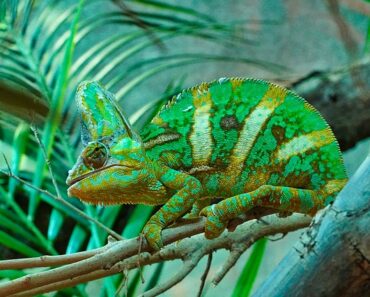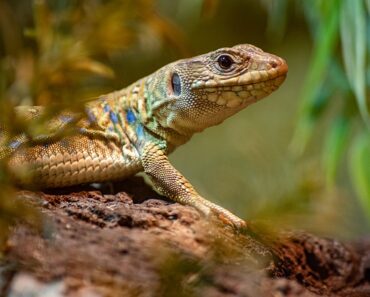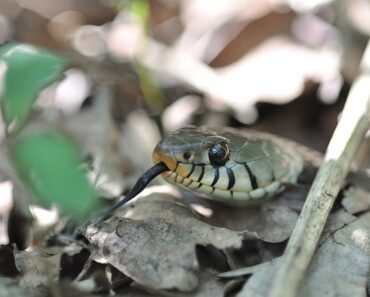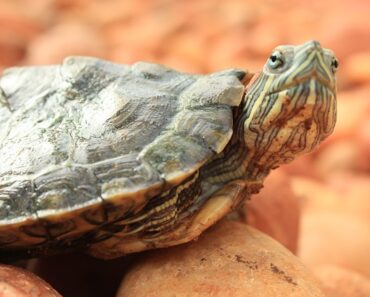
For reptiles, eating is just as essential as for any other animal. Because of this importance, it is important to know how to give them a food adapted to their species but also according to their nutritional needs, so that their organism is not affected by this diet.
Indeed, each species has its own metabolism, and we must learn to differentiate the specific needs of each one.
In addition, the conditions under which reptiles will feed must also be taken into consideration, since the variation of the outside temperature plays an important role on their metabolic functioning.
Already now, if you wish to have reptiles in your home, it is important to learn about the desired species, their feeding habits and their lifestyle.
What types of food to distribute?
Reptiles, especially snakes, are naturally accustomed to eating whole prey, they are in no way vegetarian and remain strict carnivores.
This is a very important aspect to know and respect when you decide to choose a snake, because you must be able to give it these preys. In case of difficulties on this subject, it is better to turn to an alternative solution, such as vegetarian lizards, for example, or turtles that can feed on other things.
Most reptiles are content with small rodents, although some may prefer birds or even fish.
To feed a reptile like a snake, it is better to give the animal dead rather than alive: first, for reasons of food storage at home, it is easier to find a place in the freezer dedicated to this purpose for example.
Secondly, because there is always a risk factor in feeding a snake with a live animal, as some will be unable to defend themselves properly in front of their prey, and may end up with serious injuries, or inflict them on their master if he tries to interfere.
Also, it has been noted that it is easier to get a snake to accept dead prey, especially if the master has been used to it from a young age.
On the other hand, one must keep in mind that some of the wild species taken from the wild (which is not advisable) will be unable to get used to eating defrosted prey.
What size should the prey be? How much to give?
In answer to this question, it all depends on the species and age of the reptile: snakes, for example, digest faster than boas, and young reptiles digest faster than adults?
As a general rule, it is estimated that a prey should be given a size equivalent to twice the size of the largest part of the reptile. This is a maximum. Some species of reptiles can also swallow several prey in a single meal, so the amount varies depending on the species and age but also on factors such as moulting period, reproduction, or growth.
Species such as sand boas only like small prey because their mouths are too narrow to swallow anything else.
Also, other reptiles are fragile and therefore require smaller prey to digest them well: it is advisable to give them a prey that never exceeds the largest part of their body.
On the quantity and frequency, the feeding schedule also varies from one species to another: snakes may eat every 3 or 4 days while boas only eat every 6 days.
Namely, the bigger the snake grows, the larger the prey size and the more food must be proportioned, therefore important, but the more the frequency also decreases.
The ideal is to have a scale and to follow the weight gain of the reptile to adjust the quantity, the size of the prey and the frequency of the meals as well as possible.
Most reptiles have a real daytime activity and they feed during the day. But some, like the python, also have nocturnal activity. It is important to make sure to respect this day/night rhythm; to do so, simply look at the slit in their pupil which will give indications on the nocturnal adaptation of the reptile.
Which food for which animal?
. Agamids
Agamids are mainly insectivorous and carnivorous, so they can be fed with grasshoppers, crickets, cockroaches, young lizards but also dragonflies, small scorpions and spiders.
In adulthood, their food can be supplemented with very small rodents and chicks.
When they are in captivity, agamids can be fed live prey, alternating if possible 3 kinds of insects such as crickets, cockroaches and why not mealworms.
The food can also be sprinkled with calcium 2 to 3 times a week as well as vitamin D to help them develop their metabolism and compensate for possible deficiencies.
. Water turtles
Aquatic turtles are not difficult to feed since, like their terrestrial congeners, they are very opportunistic and feed on what they find.
However, turtles are divided into 3 categories, namely carnivorous, omnivorous and herbivorous and you must be aware of your animal’s diet.
Indeed, for the aquatic turtles known as carnivorous, it will be necessary to provide mainly small fish, rodents, crustaceans, insects (larvae, snails and earthworms) and also some amphibians or young snakes.
For the so-called herbivorous turtles, the food will be made up of semi-aquatic plants such as watercress, water lettuce, water hyacinths but also algae, plants and herbs such as dandelion, endives, chard, lettuce and finally some fruits such as melon, oranges, figs.
For omnivorous turtles, as their name indicates, they can feed on a diet combining that of carnivorous and herbivorous turtles.
. The land turtles
Terrestrial turtles, in contrast to their aquatic congeners, are very dynamic and very active, they spend their time in the wild looking for food.
This is why they generally eat whatever they find and this is also why their diet is quite varied. Their diet consists of vegetables, plants, fruits and insects.
As a general rule, the land turtle eats 90% of vegetables and 10% of fruits.
In order for the formation of their carapace to be perfect, land turtles do not eat meat. For this purpose, it is also important to give them a fairly high calcium intake.
The diet of a tortoise must be as close as possible to that which it would have in its natural environment while taking care not to overfeed it.
The real difficulty thus lies in the frequency and the quantity of the food: naturally, the reptile knows how to regulate itself but it happens (too) often that its master feeds it more than it should. The quantity of food recommended varies with the temperature, the age of the reptiles, their activity and their sex.
Young individuals absorb more food than adults because their bodies require more to develop their metabolism and meet all their vital and nutritional needs: for example, a baby crocodile absorbs between 5 and 10% of its weight each week. Adult crocodiles, for their part, eat “only” 10% of their weight. A snake of about 2m swallows 2 to 3 mice per week and a chameleon can swallow 6 locusts per day.
Concretely, a reptile can feed alone at will, it will regulate itself.
Nutrients
In terms of nutrients, care must be taken to ensure that reptiles consume all or most of what they are given, in order to diversify their diet and limit possible vitamin deficiencies.
Thus, it is necessary to pay attention to the smell but also to the color of the prey and its body temperature which will sharpen (or not) the appetite of the reptiles.
As a general rule, even if the consumption of whole prey has no or few vitamin deficiencies; it can be useful to give the reptile, using a pipette or with a long, flat 20 cm metal forceps, vitamins A, D, C with the addition of cod liver oil, egg yolk or through a polyvitamin hydrosol.
One last indication: don’t forget to give water to reptiles because their needs vary greatly depending on the state of hydration of their prey.
Reptiles excrete 98% of their urinary waste in the form of acid and have developed very effective mechanisms for recovering water in all its forms.
Many reptiles are unable to drink from a container and therefore drink from dewdrops. In this case, provide a spray bottle.
For the turtles, it is quite different since they can plunge their head in the water.
In any case, it is necessary to use only clean water for reptiles’ drinking, mineral water is often healthier than tap water.






